All the postings of mine in this whole site is posted by some one else in the net everywhere. All copyrights remain the properties of their respective owners.
Thursday, April 29, 2010
Friday, April 23, 2010
Most Poisonous Animals in the World
Top 10 Most Poisonous Animals in the World
Here are ten of the most poisonous animals in the world! From the Box Jellyfish to the Puffer Fish! Look really closely at each photo, cause next time you meet them can be the last thing you ever see!
1. Box Jellyfish
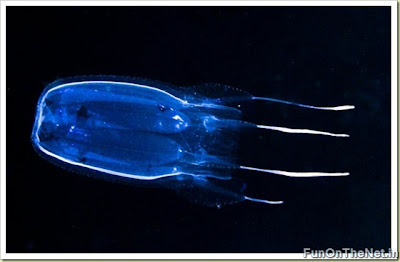
The top prize for “The World Most Venomous Animal,” would go to the Box Jellyfish. It has caused at least 5,567 recorded deaths since 1954. Their venom is among the most deadly in the world. It’s toxins attack the heart, nervous system, and skin cells. And the worst part of it is that jelly box venom is so overpoweringly painful, that human victims go in shock, drown or die of heart failure before even reaching shore. Survivors experience pain weeks after the contact with box jellies.
You have virtually no chance to survive the venomous sting, unless treated immediately. After a sting, vinegar should be applied for a minimum of 30 seconds. Vinegar has acetic acid, which disables the box jelly’s nematocysts that have not yet discharged into the bloodstream (though it will not alleviate the pain). Wearing panty hose while swimming is also a good prevention measure since it can prevent jellies from being able to harm your legs.
Jelly box can be found in the waters around Asia and Australia.
2. King Cobra
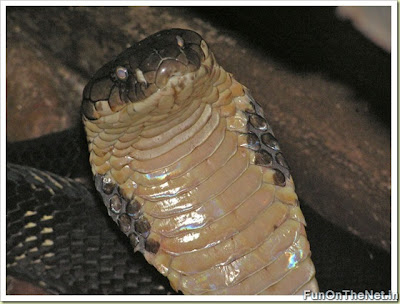
The King Cobra (Ophiophagus hannah) is the world’s longest venomous snake – growing up to 5.6 m (18.5 ft) in length. Ophiophagus, literally means “snake-eater” as it eats other snakes. One single bite of this deadly snake can easily kill a human. This snake is even capable of killing a full-grown Asian Elephant within 3 hours if the larger animal is bitten in a vulnerable area such as the trunk.
It’s venom is not as toxic as other venomous snakes, but King Cobra is capable of injecting 5 times more venom than black mamba and can result in mortality up to 5 times faster than that of the black mamba. It is quite widespread, ranging across South and South-east Asia, living in dense highland forests.
3. Marbled Cone Snail
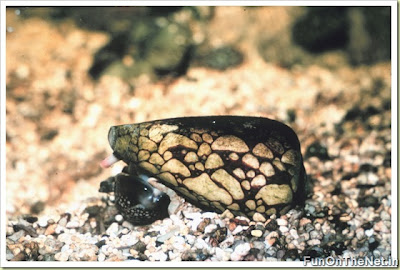
This little beautiful looking Marbled Cone snail can be as deadly as any other animal on this list. One drop of its venom is so powerful that it can kill more than 20 humans. If you ever happen to be in warm salt water environment (where these snails are often found) and see it, don’t even think of picking it up. Of course, the true purpose of its venom is to catch its prey.
Symptoms of a cone snail sting can start immediately or can be delayed in onset for days. It results in intense pain, swelling, numbness and tingling. Severe cases involve muscle paralysis, vision changes and breathing failure. There is no antivenom. However, only about 30 human deaths have been recorded from cone snail envenomation.
4. Blue-Ringed Octopus
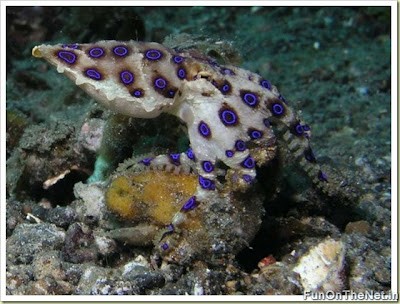
The Blue-Ringed Octopus is very small, only the size of a golf ball, but its venom is so powerful that can kill a human. Actually it carries enough poison to kill 26 adult humans within minutes, and there is no antidote. They are currently recognized as one of the world’s most venomous animals.
Its painless bite may seem harmless, but the deadly neurotoxins begin working immediately resulting in muscular weakness, numbness, followed by a cessation and breathing and ultimately death.
They can be found in tide pools in the Pacific Ocean, from Japan to Australia.
5. Death Stalker Scorpion
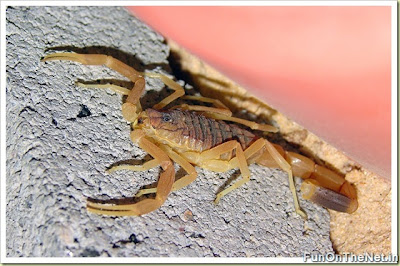
Contrarily to the popular belief most of the scorpions are relatively harmless to humans as stings produce only local effects (pain, numbness or swelling). However, the Death Starker Scorpion is highly dangerous species because its venom is a powerful cocktail of neurotoxins which causes an intense and unbearable pain, then fever, followed by coma, convulsions, paralysis and death. Fortunately, while a sting from this scorpion is extremely painful, it would be unlikely to kill a healthy, adult human. Young children, the old, or infirm (with a heart condition) are at the biggest risk.
Death stalker scorpions are spread in North Africa and Middle East.
6. Stonefish
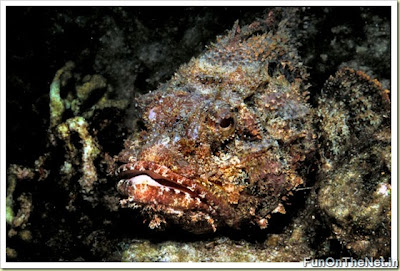
Maybe Stonefish would never win a beauty contest, but it would definitely win the top prize for being “The World Most Venomous Fish”. Its venom causes such a severe pain that the victims of its sting want the affected limb to be amputated. It is described as the worst pain known to man. It is accompanied with possible shock, paralysis, and tissue death. If not given medical attention within a couple of hours It can be fatal to humans.
Stonefish stores its toxins in gruesome-looking spines that are designed to hurt would-be predators.
Stonefish mostly live above the tropic of Capricorn, often found in the shallow tropical marine waters of the Pacific and Indian oceans, ranging from the Red Sea to the Queensland Great Barrier Reef.
7. The Brazilian wandering spider
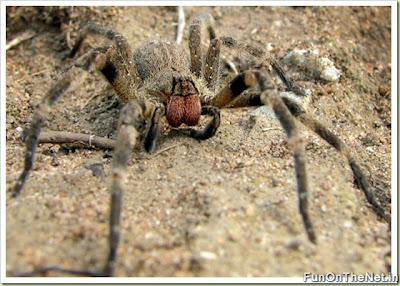
The Brazilian Wandering Spider (Phoneutria) or banana spider appears in the Guinness Book of World Records 2007 for the most venomous spider and is the spider responsible for most human deaths.
This spider is believed to have the most potent neurotoxic venom of any living spider. Only 0.006mg (0.00000021oz) is sufficient to kill a mouse. They are also so dangerous because of their wandering nature. They often hide during daytime in highly populated areas inside houses, clothes, boots, and cars.
Its venomous bite causes not only intense pain, the venom of the spider can also cause priapism – uncomfortable erections lasting for many hours that lead to impotence.
8. Inland Taipan
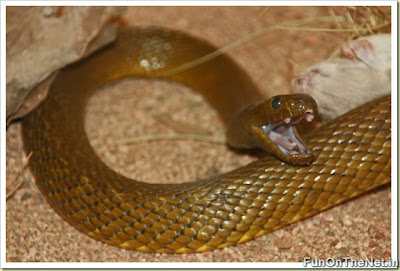
The prize for “The World’s Most Venomous Snake” goes to the Inland Taipan of Australia. Just a single bite from this snake contains enough venom to kill 100 human adults or an army of 250,000 mice. Its venom is at least 200 – 400 times more toxic than a common cobra. The Inland Taiwan’s extremely neurotoxic venom can kill an adult human in as little as 45 minutes. Fortunately this snake is very shy and there have been no documented human fatalities (all known bites were treated with antivenin).
9. Poison Dart Frog
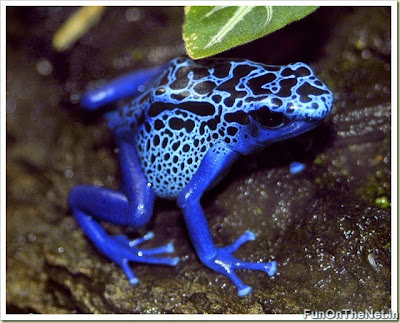
If you ever happen to be running through the rain forests somewhere in Central or South America, do not ever pick up beautiful and colorful frogs – it can be the Poison Dart Frog. This frog is probably the most poisonous animal on earth.The 2 inch long (5cm) golden poison dart frog has enough venom to kill 10 adult humans or 20,000 mice. Only 2 micrograms of this lethal toxin (the amount that fits on the head of a pin) is capable of killing a human or other large mammal. They are called “dart frogs” because indigenous Amerindians’ use of their toxic secretions to poison the tips of their blow-darts. Poison dart frogs keep their poison in their skins and will sicken or kill anybody who touches or eats it.
10. Puffer Fish
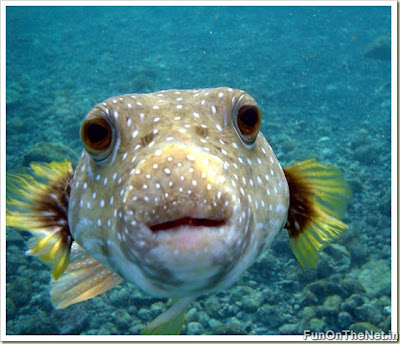
Puffer Fish are the second most poisonous vertebrate on earth (the first one is golden dart Frog). The meat of some species is a delicacy in both Japan (as fugu) and Korea (as bok-uh) but the problem is that the skin and certain organs of many puffer fish are very poisonous to humans.
This puffy fish produce rapid and violent death..Puffer’s poisoning causes deadening of the tongue and lips, dizziness, vomiting, rapid heart rate, difficulty breathing, and muscle paralysis. Victims die from suffocation as diaphragm muscles are paralyzed. Most of the victims die after four to 24 hours. There is no known antidote, Most deaths from fugu happen when untrained people catch and prepare the fish.
World's Largest Butterfly
World's Largest Butterfly
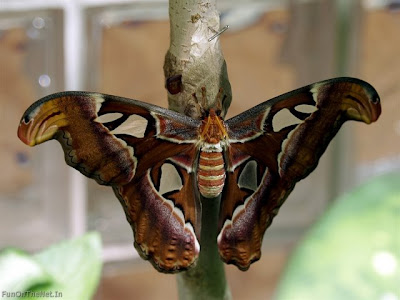
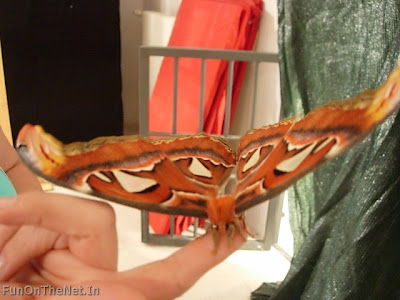
The Atlas moth (Attacus atlas) is a large saturniid moth found in the tropical and subtropical forests of Southeast Asia, southern China, common across the Malay archipelago, Thailand to Indonesia.
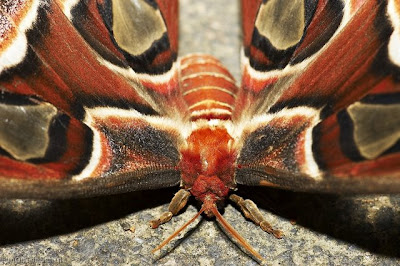
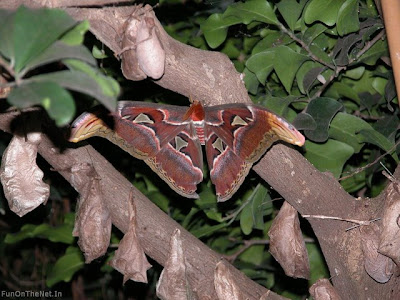
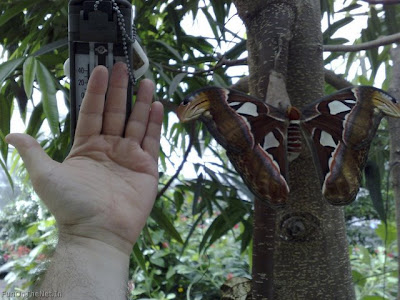
In India, Atlas moths are cultivated for their silk in a non-commercial capacity; unlike that produced by the related Silkworm moth (Bombyx mori), Atlas moth silk is secreted as broken strands. This brown, wool-like silk is thought to have greater durability and is known as fagara. Atlas moth cocoons have been employed as purses in Taiwan.
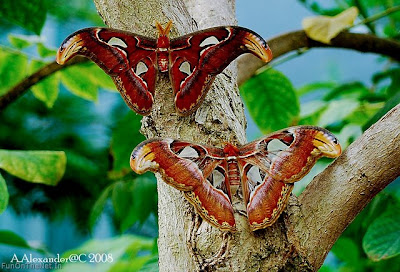
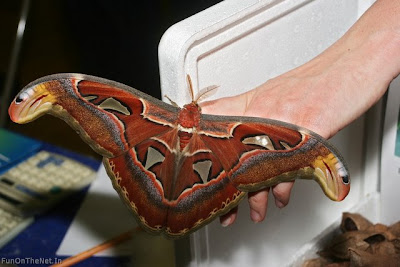
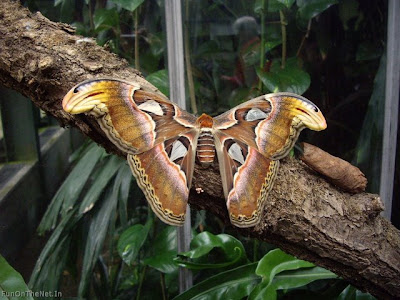
Atlas moths are considered to be the largest moths in the world in terms of total wing surface area (upwards of c. 400 square cm or 65 square inches). Their wingspans are also amongst the largest, from 25-30 cm (10-12 inches). Females are appreciably larger and heavier.
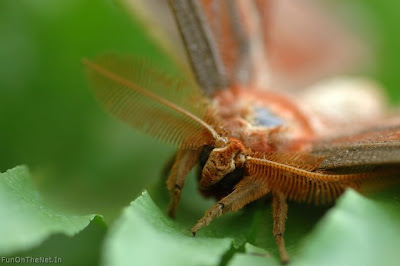
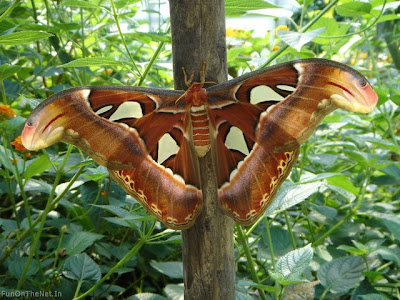

Atlas moths are said to be named after either the Titan of Greek mythology, or their map-like wing patterns. In Hong Kong the Cantonese name translates as "snake's head moth", referring to apical extension of the forewing, which bears a passing resemblance to a snake's head.
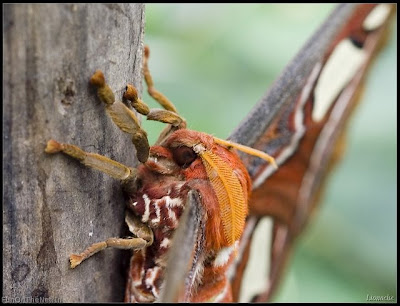

Atlas moths are predominantly tawny to maroon in colour with roughly triangular, diaphanous "eyes" on both forewing and hindwing, bordered in black. The purpose of these dramatic, gossamer portals is not clear, but they are thought to play a role in predator avoidance. Their bodies are hairy and disproportionately small compared to their wings.
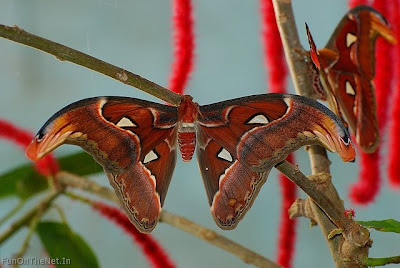
The Top 15 Skylines in the World
The Top 15 Skylines in the World
1. Hong Kong, China
Hong Kong is number one on my list for many reasons: Hong Kong has whopping 39 buildings over 200 meters tall. It also boasts four of the 15 tallest buildings in the world... that's all in one city! Hong Kong's skyline shows a large selection of distinct sky-reaching towers, with beautiful night lighting and reflection. This city exemplifies the post-modern skyscraper and skyline. Finally, the mountain backdrop makes this skyline (as you can clearly see) the greatest on the planet!
Metro/Urban Population: 6.8 million
Hong Kong is number one on my list for many reasons: Hong Kong has whopping 39 buildings over 200 meters tall. It also boasts four of the 15 tallest buildings in the world... that's all in one city! Hong Kong's skyline shows a large selection of distinct sky-reaching towers, with beautiful night lighting and reflection. This city exemplifies the post-modern skyscraper and skyline. Finally, the mountain backdrop makes this skyline (as you can clearly see) the greatest on the planet!
Metro/Urban Population: 6.8 million
Hong Kong
2. Chicago, USA
Chicago is the birthplace of the modern skyscraper. When Chicago built its first steel high-rise in 1885, it was not the tallest structure in the world but the first example of a new form of engineering that would change nearly every city on earth. Chicago has 17 buildings over 200 meters tall (three of which are among the top 20 tallest buildings in the world, including the tallest in North America). Chicago has some of the finest mid-century architecture and examples of modern skyscrapers.
Metro/Urban Population: 8.5 million
Chicago is the birthplace of the modern skyscraper. When Chicago built its first steel high-rise in 1885, it was not the tallest structure in the world but the first example of a new form of engineering that would change nearly every city on earth. Chicago has 17 buildings over 200 meters tall (three of which are among the top 20 tallest buildings in the world, including the tallest in North America). Chicago has some of the finest mid-century architecture and examples of modern skyscrapers.
Metro/Urban Population: 8.5 million
chicago
3. Shanghai, China
Not to be mistaken for a space station, Shanghai is a real city! China's biggest and most advanced city, Shanghai was said to be the most cosmopolitan city in the beginning of the 20th century, but lost its glory during the "Mao era". It is now quickly regaining its position as one of the biggest economic powerhouses in the world as well as a showcase of modern architecture. In Shanghai you'll find 18 structures that are over 200 meters tall, one of which is the insanely tall, the 468m downtown Oriental Pearl TV Tower.
Metro/Urban Population: 13.1 million
Not to be mistaken for a space station, Shanghai is a real city! China's biggest and most advanced city, Shanghai was said to be the most cosmopolitan city in the beginning of the 20th century, but lost its glory during the "Mao era". It is now quickly regaining its position as one of the biggest economic powerhouses in the world as well as a showcase of modern architecture. In Shanghai you'll find 18 structures that are over 200 meters tall, one of which is the insanely tall, the 468m downtown Oriental Pearl TV Tower.
Metro/Urban Population: 13.1 million
Shanghai
4. New York City, USA New York City has one of the densest and most diverse skylines, with a huge collection of buildings and building styles. Thanks to Hollywood's obsession with the city, it is also the most easily recognizable skyline in the world. New York City has an amazing 44 buildings over 200 meters - the most in the world! Home of the famous, now destroyed World Trade Center Towers, the Empire State building, the Statue of Liberty and the United Nations, New York City is the financial capital of the western world. Upon the completion of the new "Freedom Tower" (built on the old site of the World Trade Centers), it may rank higher in this list (depending on how good it looks of course).
Metro/Urban Population: 21.0 million
New York City
5. Tokyo, Japan
Tokyo is the world's most populated city. Its skyline has a number of unique characteristics that set it apart from other big city skylines, among them 15 structures at over 200 meters tall (including the Tokyo Tower which changes colors every night). But because of the density and vast size of the city, every corner appears to have its own skyline. With the height restrictions and the required red lights that flash atop all mid to tall-sized buildings make the city look spectacular at night. Tokyo is filled with neon lighting and unique, contemporary architecture, and like New York City is also often portrayed in movies for its aesthetic and eye-catching cityscapes. Interesting fact: Tokyo houses the world's largest fleet of helicopters to get around town if traffic gets too crazy.
Metro/Urban Population: 32.0 million
Tokyo is the world's most populated city. Its skyline has a number of unique characteristics that set it apart from other big city skylines, among them 15 structures at over 200 meters tall (including the Tokyo Tower which changes colors every night). But because of the density and vast size of the city, every corner appears to have its own skyline. With the height restrictions and the required red lights that flash atop all mid to tall-sized buildings make the city look spectacular at night. Tokyo is filled with neon lighting and unique, contemporary architecture, and like New York City is also often portrayed in movies for its aesthetic and eye-catching cityscapes. Interesting fact: Tokyo houses the world's largest fleet of helicopters to get around town if traffic gets too crazy.
Metro/Urban Population: 32.0 million
Tokyo, Japan
6. Singapore
One of the best (urban) planned and cleanliest metropolitan cities in the world, Singapore looks like an architectural model city come to life. The buildings cannot be higher than 280 meters due to air traffic control restrictions, but that has added a tall (but not too tall) and consistent building height and space pattern that makes this skyline unique: Three buildings are exactly 280 meters tall and 5 others (8 total) stand at just over 200 metres. The buildings are mostly light-coloured and there is a large expanse of greenery dotted around the city core. This South-Eastern city is definitely in a league of its own.
Metro/Urban Population: 3.8 million
Singapore
7. Toronto, Canada
Toronto is a meeting place, a crossroads of many cultures and ethnicities. Toronto is downtown Canada, the biggest city in the country with a skyline to match. Toronto has 7 structures in its skyline that stand at over 200 metres, including the astonishingly tall 553 metres, CN Tower, which is often referred to as the tallest freestanding structure in the world. While mostly untrue (because there are taller TV masts in the world), the CN Tower possesses the world's highest observation deck, making this city's skyline one of the most immediately identifiable.
Metro/Urban Population: 5.1 million
Toronto is a meeting place, a crossroads of many cultures and ethnicities. Toronto is downtown Canada, the biggest city in the country with a skyline to match. Toronto has 7 structures in its skyline that stand at over 200 metres, including the astonishingly tall 553 metres, CN Tower, which is often referred to as the tallest freestanding structure in the world. While mostly untrue (because there are taller TV masts in the world), the CN Tower possesses the world's highest observation deck, making this city's skyline one of the most immediately identifiable.
Metro/Urban Population: 5.1 million
Toronto, Canada
8. Kuala Lumpur, Malaysia
This is probably the most impressive city worldwide that has less than 2 million residents. Marvelous modern buildings reach the sky here, and while the skyline is not too dense, it does allow buildings to soar and stand out. Kuala Lumpur has three of the 25 tallest buildings worldwide, including the tallest twin buildings, the Pretonos Towers (which are arguably the second and third tallest overall in the world) as well as the 420 meters Menara Kuala Lumpur Tower.
Metro/Urban Population: 1.5 million
This is probably the most impressive city worldwide that has less than 2 million residents. Marvelous modern buildings reach the sky here, and while the skyline is not too dense, it does allow buildings to soar and stand out. Kuala Lumpur has three of the 25 tallest buildings worldwide, including the tallest twin buildings, the Pretonos Towers (which are arguably the second and third tallest overall in the world) as well as the 420 meters Menara Kuala Lumpur Tower.
Metro/Urban Population: 1.5 million
Kuala Lumpur, Malaysia
9. Shenzhen, China
What was a tiny fishing village on the border of Hong Kong in 1970 is now a buzzing metropolis of over four million people. With 13 buildings at over 200 meters tall, including the Shun Hing Square (the 8th tallest building in the world), Shenzen is a marvel of lights after sunset. You can't help but ask yourself if you are in a video game or in a real city.
Metro/Urban Population: 4.2 million
What was a tiny fishing village on the border of Hong Kong in 1970 is now a buzzing metropolis of over four million people. With 13 buildings at over 200 meters tall, including the Shun Hing Square (the 8th tallest building in the world), Shenzen is a marvel of lights after sunset. You can't help but ask yourself if you are in a video game or in a real city.
Metro/Urban Population: 4.2 million
Shenzhen, China
10. Seoul, South Korea
This city's skyscrapers are divided into many clusters, spread amongst the main businesses and residential districts. Most of the recent growth in Seoul's skyline, however, has been of residential towers over 60 storeys high that are shooting up like blades of grass! There are 10 buildings in Seoul over 200 meters tall and much of the mid-rise to high-rise structures are lined up in a linear fashion, creating a "wall" of buildings like no other. Seoul is where the ancient Eastern world meets the modern West.
Metro/Urban Population: 20.8 million
This city's skyscrapers are divided into many clusters, spread amongst the main businesses and residential districts. Most of the recent growth in Seoul's skyline, however, has been of residential towers over 60 storeys high that are shooting up like blades of grass! There are 10 buildings in Seoul over 200 meters tall and much of the mid-rise to high-rise structures are lined up in a linear fashion, creating a "wall" of buildings like no other. Seoul is where the ancient Eastern world meets the modern West.
Metro/Urban Population: 20.8 million
Seoul, South Korea
11. Sao Paolo, Brazil
"What building did you say they lived in?" Finding it in the largest mass of condensed apartment buildings anywhere would be like finding a needle in a haystack. Sao Paolo has a population of over 18 million people! While the buildings are not super tall (with only a single structure at over 200 meters tall) this skyline is nevertheless stacked. Sao Paolo has a fleet of over 500 helicopters, the second largest helicopter fleet in the world.
Metro/Urban Population: 18.3 million
"What building did you say they lived in?" Finding it in the largest mass of condensed apartment buildings anywhere would be like finding a needle in a haystack. Sao Paolo has a population of over 18 million people! While the buildings are not super tall (with only a single structure at over 200 meters tall) this skyline is nevertheless stacked. Sao Paolo has a fleet of over 500 helicopters, the second largest helicopter fleet in the world.
Metro/Urban Population: 18.3 million
Sao Paolo, Brazil
12. Sydney, Australia
Australia's showcase city, Sydney has one of the most recognizable skylines due to its world-famous harbour, often referred to as the most beautiful natural harbour in the world. The Sydney Harbour has many bays, inlets and secondary harbours. It is spanned by the monumental Harbour Bridge, and the Opera House decorates the shoreline like a white flower. The Sydney skyline is world-class with hundreds of skyscrapers in the central business district and many more high-rise buildings in the outlying neighbourhoods. Sydney has 8 buildings over 200 meters tall.
Metro/Urban Population: 4.2 million
Australia's showcase city, Sydney has one of the most recognizable skylines due to its world-famous harbour, often referred to as the most beautiful natural harbour in the world. The Sydney Harbour has many bays, inlets and secondary harbours. It is spanned by the monumental Harbour Bridge, and the Opera House decorates the shoreline like a white flower. The Sydney skyline is world-class with hundreds of skyscrapers in the central business district and many more high-rise buildings in the outlying neighbourhoods. Sydney has 8 buildings over 200 meters tall.
Metro/Urban Population: 4.2 million
Sydney, Australia
13. Frankfurt, Germany
Certainly one of Europe's most interesting cities in terms of skylines, Frankfurt is home to five structures that are over 200 meters tall. These modern skyscrapers are marvels compared to those other, mostly non-existent ones scattered across European cities. The contrast here is interesting: The city combines low-rise, high-density traditional European architecture (some of which is over 1,000 years old), with modern towers that stick out like sore thumbs, but are impressive nonetheless.
Metro/Urban Population: 4.1 million
Frankfurt, Germany
14. Dubai, United Arab, Emirates
Is this a mirage in the Middle East? Seemingly out of nowhere emerges a city in the middle of a desert. This is Dubai, a city that produces only the best modern architecture in the world. Already home of the world's tallest all-hotel building and the tallest all-residential building in the world, AND currently proposed to build the world's tallest building, this skyline might just leap to the number 1 spot in the near future. While the skyline is not so dense, each building is a marvel all on its own. As a skyline it probably can't compete with the larger cities, however the individual buildings in this city are by far the greatest examples of modern architectural accomplishments. All seven structures in this city at over 200 meters tall were built in 1999 or later ! - that's how new this city is.
Metro/Urban Population: 1.6 million
Is this a mirage in the Middle East? Seemingly out of nowhere emerges a city in the middle of a desert. This is Dubai, a city that produces only the best modern architecture in the world. Already home of the world's tallest all-hotel building and the tallest all-residential building in the world, AND currently proposed to build the world's tallest building, this skyline might just leap to the number 1 spot in the near future. While the skyline is not so dense, each building is a marvel all on its own. As a skyline it probably can't compete with the larger cities, however the individual buildings in this city are by far the greatest examples of modern architectural accomplishments. All seven structures in this city at over 200 meters tall were built in 1999 or later ! - that's how new this city is.
Metro/Urban Population: 1.6 million
Dubai, United Arab, Emirates
15. Guangzhou, China
Metro/Urban Population: 4.1 million
Metro/Urban Population: 4.1 million
Guangzhou, China
Scale of the Universe - Be Amazed!
Scale of the Universe - Be Amazed!
Everyone knows the universe is huge, but most people don't understand how huge it really is. This article will try to show the amazingly massive scale of the universe to you. It surely is a very humbling experience!
Earth - Our Home
This is our Home. All of us live, love, wage wars, spend our entire lifetimes here.
Earth compared to smaller Planets in our Solar System
Earth compared to larger Planets in our Solar System
Compared to our Sun
Our Sun compared to other Stars
Our Sun is just a tiny speck compared to other stars!
Hard to even make out in the picture with the Sun just 1 pixel wide. Jupiter becomes invisible at this scale.
Milky Way - Our Galaxy
There are 200-400 billion stars in the Milky Way.
The stellar disk of the Milky Way Galaxy is approximately 100,000 light-years in diameter, and is considered to be, on average, about 1,000 ly thick.
Our Milky Way galaxy is small compared to other galaxies. Our neighbouring Andromeda Galaxy has over one trillion stars!
The Observable Universe
This is a Hubble Ultra Deep Field image of a small region of the observable universe (equivalent sky area size shown in bottom left corner).
Each spot is a galaxy, consisting of billions of stars.
There are more than 170 billion galaxies in the observable universe.
There are more than 170 billion galaxies in the observable universe.
Be Amazed!
Subscribe to:
Posts (Atom)



